Resources
About Us
Seed Coating Market Size, Share & Forecast by Type (Polymers, Colorants, Minerals/Pumice), Active Ingredients (Protectants, Nutrients, Phytoactive Promoters), Crop Type (Cereals and Grains, Oilseeds and Pulses, Fruits & Vegetables) - Global Forecast to 2032
Report ID: MRAGR - 104737 Pages: 172 Mar-2025 Formats*: PDF Category: Agriculture Delivery: 2 to 4 Hours Download Free Sample ReportThe key factors driving the growth of this market are increasing demand for low-cost crop protection solutions, technological advancements, focus on seed treatment, decline in arable lands and necessity to enhance crop productivity, growing demand for low-cost alternatives to hybrid and GM seeds, and increasing farmers’ preference for seed-enhancing products. In addition, the emergence of biodegradable seed coatings provides significant growth opportunities for the stakeholders operating in this market. Moreover, precision agriculture and the integration of biologicals in seed coatings are prominent trends in the seed coating market.
Agricultural producers are continuously seeking cost-effective strategies to optimize crop performance while minimizing input expenses, making seed coating technologies an increasingly attractive solution. Seed coating technologies offer a significantly more economical approach to crop protection compared to traditional postemergence chemical treatments. By integrating protective mechanisms directly into the seed treatment, farmers can reduce overall agricultural input costs while achieving more precise and targeted crop protection. The economic efficiency of seed coatings stems from their ability to provide comprehensive protection during the most vulnerable early growth stages, potentially reducing the need for multiple chemical applications throughout the crop cycle.
The global agricultural landscape is increasingly characterized by economic pressures, fluctuating commodity prices, and the need to maximize productivity with limited resources. Seed coatings represent a strategic solution that allows farmers to achieve multiple objectives simultaneously – protecting seeds, enhancing nutrition, and managing potential crop threats – through a single, cost-effective treatment. This approach is particularly critical in emerging agricultural markets where farmers have limited financial resources and must make strategic decisions about crop protection investments.
Technological innovations have further enhanced the cost-effectiveness of seed coating solutions. Advanced coating technologies now enable more precise, targeted treatments that can reduce overall chemical usage by up to 30-40% compared to traditional crop protection methods. These innovations include the development of multi-functional coatings that combine disease protection, pest management, and nutritional support in a single treatment, creating significant economic value for agricultural producers.
Regulatory environments and environmental considerations are also driving the demand for low-cost crop protection solutions. Seed coatings offer a more environmentally friendly alternative to traditional crop protection methods, reducing chemical runoff and minimizing environmental impact while providing comprehensive crop protection. This approach aligns with global trends towards more sustainable agricultural practices and can help farmers meet increasingly stringent environmental regulations.
The economic benefits extend beyond immediate input cost reductions. Seed coatings can potentially improve crop yields, reduce crop losses, and enhance overall agricultural productivity. By providing protection during critical early growth stages, these technologies can help farmers mitigate risks associated with environmental stresses, pest pressures, and disease challenges, ultimately contributing to more stable and predictable agricultural outcomes.
The rising focus on seed treatment is a key driver propelling the growth of the seed coating market, as modern agriculture increasingly recognizes seed enhancement as a critical first step in crop production. This trend reflects a fundamental shift in farming practices, where protecting and optimizing seeds before planting is proving more efficient than addressing problems later through foliar sprays or soil treatments. Seed coatings serve as a targeted delivery system for crop protection agents, nutrients, and growth promoters, allowing precise application while minimizing environmental impact. The agricultural industry's growing emphasis on preventative plant care rather than reactive treatments has made seed coatings indispensable, particularly as farmers face mounting pressures from climate variability, regulatory restrictions on field-applied chemicals, and the need to maximize yields from every seed.
This focus on seed treatment is accelerating due to several factors. First, the proven economic benefits - studies show coated seeds can improve crop establishment rates by 15-25% while reducing overall pesticide usage. Second, the development of advanced coating technologies that combine multiple functions (protection + nutrition + stress tolerance) in single applications. Third, the expansion of high-value hybrid and genetically modified seeds, where coatings help protect significant seed investments. Additionally, global initiatives promoting sustainable agriculture are driving adoption of seed-applied biologicals as alternatives to chemical treatments. The seed coating market is further benefiting from precision farming trends, where treated seeds integrate seamlessly with automated planting systems. As agricultural input strategies continue moving toward early-intervention approaches, the seed coating market is positioned for sustained growth, with innovation increasingly focused on multi-functional coatings that address the complex challenges of modern crop production.
The emergence of biodegradable seed coatings presents a major growth opportunity for players in the seed coating market, as global agricultural practices shift toward sustainability, regulatory compliance, and environmental responsibility. With increasing restrictions on synthetic polymers and chemical-based coatings, there is a growing demand for eco-friendly alternatives that enhance seed performance while minimizing soil and water contamination. This shift provides seed coating manufacturers the chance to develop and commercialize biodegradable solutions that align with evolving consumer preferences, government policies, and sustainability goals.
Companies investing in biodegradable seed coating technologies can differentiate themselves by offering products made from natural polymers, starch-based compounds, and plant-derived biopolymers, which break down naturally without leaving harmful residues. The rising adoption of organic farming and regenerative agriculture further amplifies the demand for these coatings, creating a lucrative market segment. Additionally, advancements in biotechnology and nanomaterials allow for the integration of biostimulants, microbial inoculants, and controlled-release nutrients within biodegradable coatings, enhancing their effectiveness and market appeal.
Furthermore, regulatory incentives and government support for sustainable agricultural practices are encouraging farmers to transition toward environmentally friendly seed treatments, opening new avenues for product development and expansion. Companies that prioritize R&D, strategic partnerships, and sustainable innovation will be well-positioned to capture market share, expand into new regions, and establish themselves as leaders in the rapidly evolving biodegradable seed coating sector.
Based on material type, the seed coating market is segmented into polymers, colorants, binders, minerals/pumice, and other material types. In 2025, the polymers segment is expected to account for the largest share of the global seed coating market. The large market share of this segment is primarily attributed to the growing demand for polymers in seed coating due to their ability to enhance the seed germination process and provide protection against pests, diseases, drought, and adverse soil conditions. Moreover, the high acceptance of seed-coating polymers is attributed to their low viscosity and water-based nature, which promotes faster seed germination. Seed-coating polymers keep seeds damp/moist, provide an unwavering temperature, and suppress seeding stress from drying field conditions.
Moreover, this segment is also poised to record a higher CAGR during the forecast period of 2025–2032, owing to the rising adoption of polymeric materials in farming because of their high usefulness in binding strength and the convenience of seed pouring.
Based on active ingredients, the global seed coating market is segmented into protectants, nutrients, phytoactive promoters, and other active ingredients. In 2025, the protectants segment is expected to account for the largest share of the global seed coating market. The large market share of this segment is primarily attributed to the growing incidence of soilborne pests and diseases and the need for a safe and controlled application of plant protectants. Seed coating is an effective carrier of plant protectants, such as pesticides. In addition, the application of plant protectants through seed coating provides benefits such as precise placement on the target, minimum toxicant requirements, minimum impact on the environment, and minimum exposure to wildlife and beneficial organisms. Moreover, this segment is also projected to register the highest CAGR during the forecast period of 2025–2032.
Based on crop type, the global seed coating market is segmented into cereals & grains, oilseeds & pulses, fruits & vegetables, flowers & ornamentals, and other crop types. In 2025, the cereals & grains segment is expected to account for the largest share of the global seed coating market. The large share of this segment is mainly attributed to the growing need to increase cereal & grain production, minimize cereal & grain loss due to pests and diseases, and the increasing use of cereal & grains in animal feed, biofuel, and starch & ethanol production.
However, the fruits & vegetables segment is projected to register the highest CAGR during the forecast period of 2025–2032. The rapid growth of this segment is mainly due to the growing fruit & vegetable production globally, enhanced seed production, and increasing demand for high-quality fruit and vegetable produce.
Based on geography, the seed coating market is segmented into North America, Europe, Asia-Pacific, Latin America, and the Middle East & Africa. In 2025, North America is expected to account for the largest share of the seed coating market. This region’s large market share is attributed to region’s highly developed agriculture sector, advanced farming technologies, and strong presence of key agribusiness players. The U.S., in particular, leads the market due to widespread adoption of precision agriculture, increasing demand for high-yielding crops, and strict regulatory frameworks promoting treated seeds. Additionally, large-scale commercial farming, extensive research & development activities, and government support for seed enhancement technologies contribute to North America’s leadership in the market.
Moreover, factors such as an organized distribution chain for crop protection chemicals, the growing awareness about sustainable crop production techniques to lessen the environmental impact of high residue, and the presence of a large number of stakeholders further support the growth of the seed coating market in the region.
However, Asia-Pacific is slated to register the fastest growth rate during the forecast period of 2025– 2032, owing to rising population, increasing food demand, and rapid adoption of modern agricultural techniques in countries like China, India, and Southeast Asian nations. The shift from traditional to high-efficiency farming has led to a greater need for seed enhancement technologies that improve germination, nutrient uptake, and disease resistance. Additionally, government initiatives promoting agricultural productivity, investments in smart farming technologies, and the rising awareness about seed treatments are accelerating market expansion. However, challenges such as limited farmer awareness and regulatory variations across countries may impact the pace of adoption.
The report offers a competitive analysis based on an extensive assessment of the leading players’ product portfolios and geographic presence and the key growth strategies adopted by them over the past four years. Some of the key players operating in the seed coating market are BASF SE (Germany), Syensqo S.A. (Belgium), Chromatech Incorporated (Netherlands), Cistronics Innovations Pvt. Ltd. (India), Clariant International Ltd. (Switzerland), Croda International Plc. (U.K.), Germains Seed Technology (U.S.), Milliken & Company (U.S.), Sensient Technologies (U.S.), and Precision Laboratories, LLC (U.S.).
|
Particulars |
Details |
|
Number of Pages |
172 |
|
Format |
|
|
Forecast Period |
2025–2032 |
|
Base Year |
2024 |
|
CAGR (Value) |
7.7% |
|
Market Size (Value)in 2025 |
USD 2.51 Billion |
|
Market Size (Value) in 2032 |
USD 4.23 Billion |
|
Segments Covered |
By Material Type
By Active Ingredient
By Crop Type
|
|
Countries Covered |
North America (U.S., Canada), Europe (Germany, France, U.K., Russia, Spain, and Rest of Europe), Asia-Pacific (China, India, Japan, Australia, and Rest of Asia-Pacific), Latin America (Brazil, Mexico, Argentina, and Rest of Latin America), and the Middle East & Africa. |
|
Key Companies |
BASF SE (Germany), Syensqo S.A. (Belgium), Chromatech Incorporated (Netherlands), Cistronics Innovations Pvt. Ltd. (India), Clariant International Ltd. (Switzerland), Croda International Plc. (U.K.), Germains Seed Technology (U.S.), Milliken & Company (U.S.), Sensient Technologies (U.S.), and Precision Laboratories, LLC (U.S.). |
The global seed coating market size was valued at $2.34 billion in 2024.
The market is projected to grow from $2.51 billion in 2025 to $4.23 billion by 2032.
The seed coating market analysis indicates substantial growth, with projections indicating that the market will reach $4.23 billion by 2032 at a compound annual growth rate (CAGR) of 7.7% from 2025 to 2032.
The key companies operating in this market include BASF SE (Germany), Syensqo S.A. (Belgium), Chromatech Incorporated (Netherlands), Cistronics Innovations Pvt. Ltd. (India), Clariant International Ltd. (Switzerland), Croda International Plc. (U.K.), Germains Seed Technology (U.S.), Milliken & Company (U.S.), Sensient Technologies (U.S.), and Precision Laboratories, LLC (U.S.).
Precision agriculture and the integration of biologicals in seed coatings are prominent trends in the seed coating market.
By material type, the polymers segment is forecasted to hold the largest market share during 2025-2032
By active ingredient, the protectants segment is expected to dominate the market during 2025-2032
By crop type, the cereals & grains segment is expected to dominate the market during 2025-2032
By geography, North America is expected to hold the largest share of the market during 2025-2032.
By region, North America is expected to hold the largest share of the seed coating market in 2025. However, the Asia-Pacific region is expected to witness the fastest growth rate during the forecast period, driven by the rising population, increasing food demand, and rapid adoption of modern agricultural techniques in countries like China, India, and Southeast Asian nations.
The increasing demand for low-cost crop protection solutions, technological advancements, focus on seed treatment, decline in arable lands and necessity to enhance crop productivity, growing demand for low-cost alternatives to hybrid and GM seeds, and increasing farmers’ preference for seed-enhancing products drives the growth of this market.
1. Introduction
1.1. Market Definition & Scope
1.2. Currency & Limitations
1.2.1. Currency
1.2.2. Limitations
2. Research Methodology
2.1. Research Approach
2.2. Data Collection & Validation Process
2.2.1. Secondary Research
2.2.2. Primary Research/Interviews with Key Opinion Leaders of the Industry
2.3. Market Sizing and Forecasting
2.3.1. Market Size Estimation Approach
2.3.2. Growth Forecast Approach
2.4. Assumptions for the Study
3. Executive Summary
3.1. Overview
3.2. Segmental Analysis
3.2.1. Market Analysis, by Material Type
3.2.2. Market Analysis, by Active Ingredient
3.2.3. Market Analysis, by Crop Type
3.3. Regional Analysis
3.4. Competitive Analysis
4. Market Insights
4.1. Overview
4.2. Factors Affecting Market Growth
4.2.1. Drivers
4.2.1.1. Increasing Demand for Low-Cost Crop Protection Solutions
4.2.1.2. Rising Focus on Seed Treatment
4.2.1.3. Decline In Arable Lands and Necessity to Enhance Crop Productivity
4.2.1.4. Increasing Demand for Low-Cost Alternatives to Hybrid and GM Seeds
4.2.1.5. Increasing Farmers’ Preference for Seed-Enhancing Products
4.2.2. Restraints
4.2.2.1. Stringent and Non-Standardized Regulations
4.2.2.2. Restriction On the Use of Neonicotinoids
4.2.2.3. The Limited Shelf Life of Treated Seeds
4.2.2.4. Lower Awareness about Seed Coating Technology Among Growers in Developing Countries
4.2.3. Opportunities
4.2.3.1. Emergence of Biodegradable Seed Coatings
4.2.4. Challenges
4.2.4.1. Complex Process of the Seed Film Coating
4.2.4.2. Financial Hurdles for New Entrants
4.2.5. Trends
4.2.5.1. Precision Agriculture
4.2.5.2. Integration of Biologicals in Seed Coatings
4.3. Impact of Sustainability on the Seed Coating Market
4.3.1. Introduction
4.3.2. Regulatory Landscape and Government Initiatives
4.3.2.1. Chemical Regulation and Restrictions
4.3.2.2. Sustainable Agriculture Policies and Incentives
4.3.2.3. Certification Systems and Standards
4.3.3. Consumer Behavior and Market Trends
4.3.3.1. Evolving Farmer Preferences
4.3.3.2. Growth of Precision Agriculture
4.3.3.3. Supply Chain Sustainability Demands
4.3.4. Technological Innovations Driving Sustainability
4.3.4.1. Biodegradable and Biobased Coating Materials
4.3.4.2. Precision Application Technologies
4.3.4.3. Multifunctional and Targeted Delivery Systems
4.3.5. Corporate Sustainability Strategies
4.3.5.1. Leading Companies and Sustainability Commitments
4.3.5.2. Circular Economy Approaches
4.3.5.3. Supply Chain Integration and Partnerships
4.3.6. Challenges and Future Outlook
4.3.6.1. Challenges in Achieving Sustainable Growth
4.3.6.2. Future Market Outlook and Opportunities
4.3.7. Conclusion
4.4. Porter’s Five Forces Analysis
4.4.1. Bargaining Power of Suppliers
4.4.2. Bargaining Power of Buyers
4.4.3. Threat of Substitutes
4.4.4. Threat of New Entrants
4.4.5. Degree of Competition
5. Seed Coating Market Assessment–by Material Type
5.1. Overview
5.2. Polymers
5.2.1. Superabsorbent Polymer Gels
5.2.2. Polymer Gels
5.3. Colorants
5.4. Binders
5.5. Minerals/Pumice
5.6. Other Material Types
6. Seed Coating Market Assessment–by Active Ingredient
6.1. Overview
6.2. Protectants
6.3. Nutrients
6.4. Phytoactive Promoters
6.5. Other Active Ingredients
7. Seed Coating Market Assessment–by Crop Type
7.1. Overview
7.2. Cereals & Grains
7.2.1. Maize/Corn
7.2.2. Wheat
7.2.3. Other Cereals & Grains
7.3. Oilseeds & Pulses
7.4. Fruits & Vegetables
7.5. Flowers & Ornamentals
7.6. Other Crop Types
8. Seed Coating Market Assessment–by Geography
8.1. Overview
8.2. North America
8.2.1. U.S
8.2.2. Canada
8.3. Europe
8.3.1. France
8.3.2. Germany
8.3.3. Russia
8.3.4. Spain
8.3.5. U.K.
8.3.6. Rest of Europe
8.4. Asia Pacific
8.4.1. China
8.4.2. India
8.4.3. Australia
8.4.4. Japan
8.4.5. Rest of Asia-Pacific
8.5. Latin America
8.5.1. Brazil
8.5.2. Argentina
8.5.3. Mexico
8.5.4. Rest of Latin America
8.6. Middle East and Africa
9. Competition Analysis
9.1. Overview
9.2. Key Growth Strategies
9.3. Competitive Benchmarking
9.4. Competitive Dashboard
9.4.1. Industry Leaders
9.4.2. Market Differentiators
9.4.3. Vanguards
9.4.4. Emerging Companies
9.5. Market Share/Position Analysis
10. Company Profiles
10.1. BASF SE
10.2. Syensqo S.A.
10.3. Clariant International Ltd
10.4. Croda International Plc
10.5. Sensient Technologies Corporation
10.6. Chromatech Incorporated
10.7. Cistronics Innovations Pvt. Ltd.
10.8. Germains Seed Technology
10.9. Milliken & Company
10.10. Precision Laboratories, LLC
11. Appendix
11.1. Available Customization
11.2. Related Reports
List of Tables
Table 2 Global Seed Coating Market, by Material Type, 2023–2032 (USD Million)
Table 3 Global Polymers Market, by Type, 2023–2032 (USD Million)
Table 4 Global Polymers Market, by Country/Region, 2023–2032 (USD Million)
Table 5 Global Superabsorbent Polymer Gels Market, by Country/Region, 2023–2032 (USD Million)
Table 6 Global Polymer Gels Market, by Country/Region, 2023–2032 (USD Million)
Table 7 Global Colorants Market, by Country/Region, 2023–2032 (USD Million)
Table 8 Global Binders Market, by Country/Region, 2023–2032 (USD Million)
Table 9 Global Minerals/Pumice Market, by Country/Region, 2023–2032 (USD Million)
Table 10 Global Other Material Types Market, by Country/Region, 2023–2032 (USD Million)
Table 11 Global Seed Coating Market, by Active Ingredient, 2023–2032 (USD Million)
Table 12 Global Protectants Market, by Country/Region, 2023–2032 (USD Million)
Table 13 Global Nutrients Market, by Country/Region, 2023–2032 (USD Million)
Table 14 Global Phytoactive Promoters Market, by Country/Region, 2023–2032 (USD Million)
Table 15 Global Other Active Ingredients Market, by Country/Region, 2023–2032 (USD Million)
Table 16 Global Seed Coating Market, by Crop Type, 2023–2032 (USD Million)
Table 17 Global Seed Coating Market for Cereals & Grains, by Type, 2023–2032 (USD Million)
Table 18 Global Seed Coating Market for Cereals & Grains, by Country/Region, 2023–2032 (USD Million)
Table 19 Global Seed Coating Market for Maize/Corn, by Country/Region, 2023–2032 (USD Million)
Table 20 Global Seed Coating Market for Wheat, by Country/Region, 2023–2032 (USD Million)
Table 21 Global Seed Coating Market for Other Cereals & Grains, by Country/ Region, 2023–2032 (USD Million)
Table 22 Global Seed Coating Market for Oilseeds & Pulses, by Country/Region, 2023–2032 (USD Million)
Table 23 Global Seed Coating Market for Fruits & Vegetables, by Country/Region, 2023–2032 (USD Million)
Table 24 Global Seed Coating Market for Flowers & Ornamentals, by Country/ Region, 2023–2032 (USD Million)
Table 25 Global Seed Coating Market for Other Crop Types, by Country/Region, 2023–2032 (USD Million)
Table 26 Global Seed Coating Market, by Country/Region, 2023–2032 (USD Million)
Table 27 North America: Seed Coating Market, by Country, 2023–2032 (USD Million)
Table 28 North America: Seed Coating Market, by Material Type, 2023–2032 (USD Million)
Table 29 North America: Polymers Market, by Type, 2023–2032 (USD Million)
Table 30 North America: Seed Coating Market, by Active Ingredient, 2023–2032(USD Million)
Table 31 North America: Seed Coating Market, by Crop Type, 2023–2032 (USD Million)
Table 32 North America: Seed Coating Market for Cereals & Grains, by Type, 2023–2032 (USD Million)
Table 33 U.S.: Seed Coating Market, by Material Type, 2023–2032 (USD Million)
Table 34 U.S.: Polymers Market, by Type, 2023–2032 (USD Million)
Table 35 U.S.: Seed Coating Market, by Active Ingredient, 2023–2032 (USD Million)
Table 36 U.S.: Seed Coating Market, by Crop Type, 2023–2032 (USD Million)
Table 37 U.S.: Seed Coating Market for Cereals & Grains, by Type, 2023–2032 (USD Million)
Table 38 Canada: Seed Coating Market, by Material Type, 2023–2032 (USD Million)
Table 39 Canada: Polymers Market, by Type, 2023–2032 (USD Million)
Table 40 Canada: Seed Coating Market, by Active Ingredient, 2023–2032 (USD Million)
Table 41 Canada: Seed Coating Market, by Crop Type, 2023–2032 (USD Million)
Table 42 Canada: Seed Coating Market for Cereals & Grains, by Type, 2023–2032 (USD Million)
Table 43 Europe: Seed Coating Market, by Country/Region, 2023–2032 (USD Million)
Table 44 Europe: Seed Coating Market, by Material Type, 2023–2032 (USD Million)
Table 45 Europe: Polymers Market, by Type, 2023–2032 (USD Million)
Table 46 Europe: Seed Coating Market, by Active Ingredient, 2023–2032 (USD Million)
Table 47 Europe: Seed Coating Market, by Crop Type, 2023–2032 (USD Million)
Table 48 Europe: Seed Coating Market for Cereals & Grains, by Type, 2023–2032 (USD Million)
Table 49 France: Seed Coating Market, by Material Type, 2023–2032 (USD Million)
Table 50 France: Polymers Market, by Type, 2023–2032 (USD Million)
Table 51 France: Seed Coating Market, by Active Ingredient, 2023–2032 (USD Million)
Table 52 France: Seed Coating Market, by Crop Type, 2023–2032 (USD Million)
Table 53 France: Seed Coating Market for Cereals & Grains, by Type, 2023–2032 (USD Million)
Table 54 Germany: Seed Coating Market, by Material Type, 2023–2032 (USD Million)
Table 55 Germany: Polymers Market, by Type, 2023–2032 (USD Million)
Table 56 Germany: Seed Coating Market, by Active Ingredient, 2023–2032 (USD Million)
Table 57 Germany: Seed Coating Market, by Crop Type, 2023–2032 (USD Million)
Table 58 Germany: Seed Coating Market for Cereals & Grains, by Type, 2023–2032 (USD Million)
Table 59 Russia: Seed Coating Market, by Material Type, 2023–2032 (USD Million)
Table 60 Russia: Polymers Market, by Type, 2023–2032 (USD Million)
Table 61 Russia: Seed Coating Market, by Active Ingredient, 2023–2032 (USD Million)
Table 62 Russia: Seed Coating Market, by Crop Type, 2023–2032 (USD Million)
Table 63 Russia: Seed Coating Market for Cereals & Grains, by Type, 2023–2032 (USD Million)
Table 64 Spain: Seed Coating Market, by Material Type, 2023–2032 (USD Million)
Table 65 Spain: Polymers Market, by Type, 2023–2032 (USD Million)
Table 66 Spain: Seed Coating Market, by Active Ingredient, 2023–2032 (USD Million)
Table 67 Spain: Seed Coating Market, by Crop Type, 2023–2032 (USD Million)
Table 68 Spain: Seed Coating Market for Cereals & Grains, by Type, 2023–2032 (USD Million)
Table 69 U.K.: Seed Coating Market, by Material Type, 2023–2032 (USD Million)
Table 70 U.K.: Polymers Market, by Type, 2023–2032 (USD Million)
Table 71 U.K.: Seed Coating Market, by Active Ingredient, 2023–2032 (USD Million)
Table 72 U.K.: Seed Coating Market, by Crop Type, 2023–2032 (USD Million)
Table 73 U.K.: Seed Coating Market for Cereals & Grains, by Type, 2023–2032 (USD Million)
Table 74 Rest of Europe: Seed Coating Market, by Material Type, 2023–2032 (USD Million)
Table 75 Rest of Europe: Polymers Market, by Type, 2023–2032 (USD Million)
Table 76 Rest of Europe: Seed Coating Market, by Active Ingredient, 2023–2032 (USD Million)
Table 77 Rest of Europe: Seed Coating Market, by Crop Type, 2023–2032 (USD Million)
Table 78 Rest of Europe: Seed Coating Market for Cereals & Grains, by Type, 2023–2032 (USD Million)
Table 79 Asia-Pacific: Seed Coating Market, by Country/Region, 2023–2032 (USD Million)
Table 80 Asia-Pacific: Seed Coating Market, by Material Type, 2023–2032 (USD Million)
Table 81 Asia-Pacific: Polymers Market, by Type, 2023–2032 (USD Million)
Table 82 Asia-Pacific: Seed Coating Market, by Active Ingredient, 2023–2032 (USD Million)
Table 83 Asia-Pacific: Seed Coating Market, by Crop Type, 2023–2032 (USD Million)
Table 84 Asia-Pacific: Seed Coating Market for Cereals & Grains, by Type, 2023–2032 (USD Million)
Table 85 China: Seed Coating Market, by Material Type, 2023–2032 (USD Million)
Table 86 China: Polymers Market, by Type, 2023–2032 (USD Million)
Table 87 China: Seed Coating Market, by Active Ingredient, 2023–2032 (USD Million)
Table 88 China: Seed Coating Market, by Crop Type, 2023–2032 (USD Million)
Table 89 China: Seed Coating Market for Cereals & Grains, by Type, 2023–2032 (USD Million)
Table 90 India: Seed Coating Market, by Material Type, 2023–2032 (USD Million)
Table 91 India: Polymers Market, by Type, 2023–2032 (USD Million)
Table 92 India: Seed Coating Market, by Active Ingredient, 2023–2032 (USD Million)
Table 93 India: Seed Coating Market, by Crop Type, 2023–2032 (USD Million)
Table 94 India: Seed Coating Market for Cereals & Grains, by Type, 2023–2032 (USD Million)
Table 95 Australia: Seed Coating Market, by Material Type, 2023–2032 (USD Million)
Table 96 Australia: Polymers Market, by Type, 2023–2032 (USD Million)
Table 97 Australia: Seed Coating Market, by Active Ingredient, 2023–2032 (USD Million)
Table 98 Australia: Seed Coating Market, by Crop Type, 2023–2032 (USD Million)
Table 99 Australia: Seed Coating Market for Cereals & Grains, by Type, 2023–2032 (USD Million)
Table 100 Japan: Seed Coating Market, by Material Type, 2023–2032 (USD Million)
Table 101 Japan: Polymers Market, by Type, 2023–2032 (USD Million)
Table 102 Japan: Seed Coating Market, by Active Ingredient, 2023–2032 (USD Million)
Table 103 Japan: Seed Coating Market, by Crop Type, 2023–2032 (USD Million)
Table 104 Japan: Seed Coating Market for Cereals & Grains, by Type, 2023–2032 (USD Million)
Table 105 Rest of Asia-Pacific: Seed Coating Market, by Material Type, 2023–2032 (USD Million)
Table 106 Rest of Asia-Pacific: Polymers Market, by Type, 2023–2032 (USD Million)
Table 107 Rest of Asia-Pacific: Seed Coating Market, by Active Ingredient, 2023–2032 (USD Million)
Table 108 Rest of Asia-Pacific: Seed Coating Market, by Crop Type, 2023–2032 (USD Million)
Table 109 Rest of Asia-Pacific: Seed Coating Market for Cereals & Grains, by Type, 2023–2032 (USD Million)
Table 110 Latin America: Seed Coating Market, by Country/Region, 2023–2032 (USD Million)
Table 111 Latin America: Seed Coating Market, by Material Type, 2023–2032 (USD Million)
Table 112 Latin America: Polymers Market, by Type, 2023–2032 (USD Million)
Table 113 Latin America: Seed Coating Market, by Active Ingredient, 2023–2032 (USD Million)
Table 114 Latin America: Seed Coating Market, by Crop Type, 2023–2032 (USD Million)
Table 115 Latin America: Seed Coating Market for Cereals & Grains, by Type, 2023–2032 (USD Million)
Table 116 Brazil: Seed Coating Market, by Material Type, 2023–2032 (USD Million)
Table 117 Brazil: Polymers Market, by Type, 2023–2032 (USD Million)
Table 118 Brazil: Seed Coating Market, by Active Ingredient, 2023–2032 (USD Million)
Table 119 Brazil: Seed Coating Market, by Crop Type, 2023–2032 (USD Million)
Table 120 Brazil: Seed Coating Market for Cereals & Grains, by Type, 2023–2032 (USD Million)
Table 121 Argentina: Seed Coating Market, by Material Type, 2023–2032 (USD Million)
Table 122 Argentina: Polymers Market, by Type, 2023–2032 (USD Million)
Table 123 Argentina: Seed Coating Market, by Active Ingredient, 2023–2032 (USD Million)
Table 124 Argentina: Seed Coating Market, by Crop Type, 2023–2032 (USD Million)
Table 125 Argentina: Seed Coating Market for Cereals & Grains, by Type, 2023–2032 (USD Million)
Table 126 Mexico: Seed Coating Market, by Material Type, 2023–2032 (USD Million)
Table 127 Mexico: Polymers Market, by Type, 2023–2032 (USD Million)
Table 128 Mexico: Seed Coating Market, by Active Ingredient, 2023–2032 (USD Million)
Table 129 Mexico: Seed Coating Market, by Crop Type, 2023–2032 (USD Million)
Table 130 Mexico: Seed Coating Market for Cereals & Grains, by Type, 2023–2032 (USD Million)
Table 131 Rest of Latin America: Seed Coating Market, by Material Type, 2023–2032 (USD Million)
Table 132 Rest of Latin America: Polymers Market, by Type, 2023–2032 (USD Million)
Table 133 Rest of Latin America: Seed Coating Market, by Active Ingredient, 2023–2032 (USD Million)
Table 134 Rest of Latin America: Seed Coating Market, by Crop Type, 2023–2032 (USD Million)
Table 135 Rest of Latin America: Seed Coating Market for Cereals & Grains, by Type, 2023–2032 (USD Million)
Table 136 Middle East & Africa: Seed Coating Market, by Material Type, 2023–2032 (USD Million)
Table 137 Middle East & Africa: Polymers Market, by Type, 2023–2032 (USD Million)
Table 138 Middle East & Africa: Seed Coating Market, by Active Ingredient, 2023–2032 (USD Million)
Table 139 Middle East & Africa: Seed Coating Market, by Crop Type, 2023–2032 (USD Million)
Table 140 Middle East & Africa: Seed Coating Market for Cereals & Grains, by Type, 2023–2032 (USD Million)
Table 141 Recent Developments, by Company (2022-2025)
List of Figures
Figure 1 Market Ecosystem
Figure 2 Key Stakeholders
Figure 3 Research Process
Figure 4 Key Secondary Sources
Figure 5 Primary Research Techniques
Figure 6 Key Executives Interviewed
Figure 7 Breakdown of Primary Interviews (Supply-Side & Demand-Side)
Figure 8 Market Sizing and Growth Forecast Approach
Figure 9 In 2025, the Polymers Segment is Expected to Dominate the Global Seed Coating Market
Figure 10 In 2025, the Protectants Segment is Expected to Dominate the Global Seed Coating Market
Figure 11 In 2025, the Cereals & Grains Segment is Expected to Dominate the Global Seed Coating Market
Figure 12 Global Seed Coating Market, by Region (2025 Vs. 2032)
Figure 13 Impact Analysis of Market Dynamics
Figure 14 Global Seed Coating Market, by Material Type, 2025 Vs. 2032 (USD Million)
Figure 15 Global Seed Coating Market, by Active Ingredient, 2025 Vs. 2032 (USD Million)
Figure 16 Global Seed Coating Market, by Crop Type, 2025 Vs. 2032 (USD Million)
Figure 17 Global Seed Coating Market, by Region, 2025 Vs. 2032 (USD Million)
Figure 18 North America: Seed Coating Market Snapshot
Figure 19 Europe: Seed Coating Market Snapshot
Figure 20 Asia-Pacific: Seed Coating Market Snapshot
Figure 21 Latin America: Seed Coating Market Snapshot
Figure 22 Middle East and Africa: Seed Coating Market Snapshot
Figure 23 Key Growth Strategies Adopted by Key Players (2022–2025)
Figure 24 Seed Coating Market: Competitive Benchmarking, by Material Type
Figure 25 Seed Coating Market: Competitive Benchmarking, by Region
Figure 26 Competitive Dashboard: Seed Coating Market
Figure 27 Seed Coating Market Position Analysis, 2024
Figure 28 BASF SE: Financial Overview (2024)
Figure 29 Syensqo S.A.: Financial Overview (2023)
Figure 30 Clariant International Ltd: Financial Overview (2024)
Figure 31 Croda International Plc: Financial Overview (2024)
Figure 32 Sensient Technologies Corporation: Financial Overview (2024)
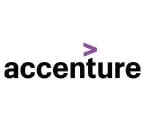
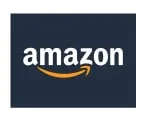
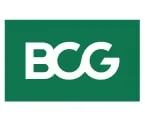
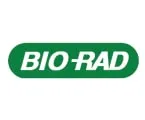
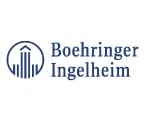
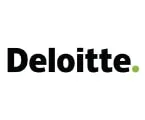

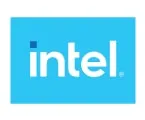
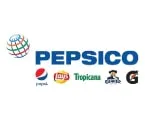
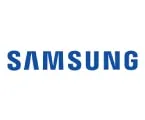
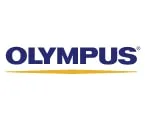

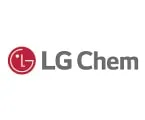
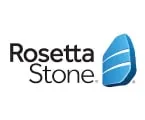
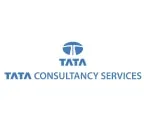

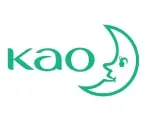
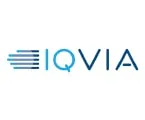


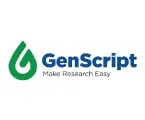
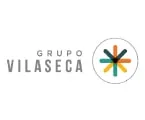

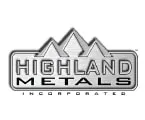
Published Date: Feb-2024
Published Date: Aug-2022
Please enter your corporate email id here to view sample report.
Subscribe to get the latest industry updates